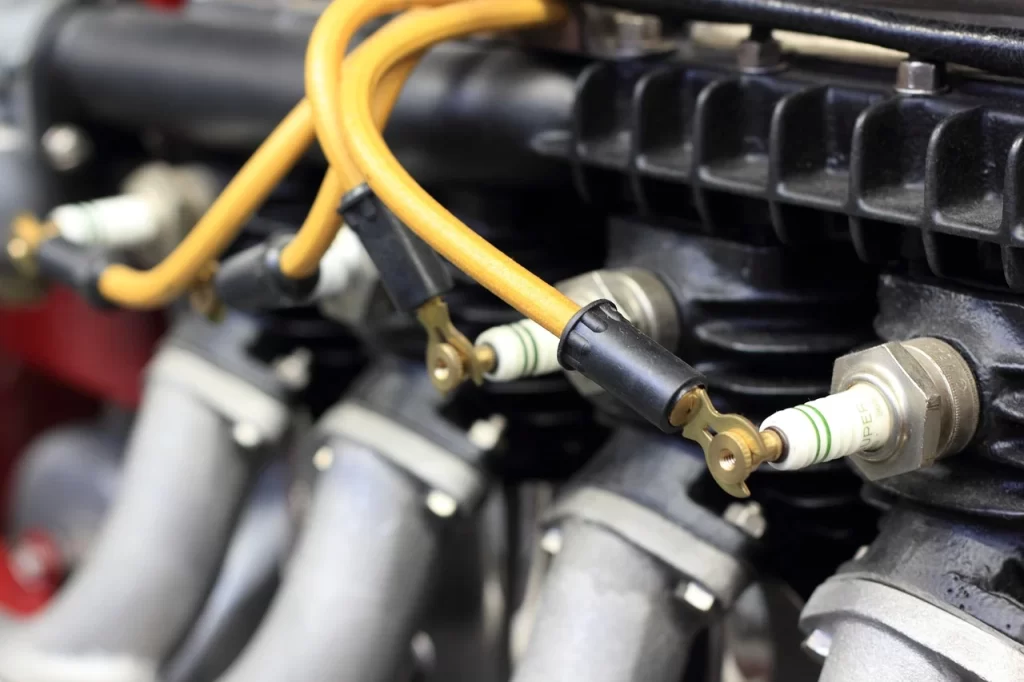What Are Spark Plugs?
Spark plugs are small devices located in the engine’s cylinder head. They generate a spark that ignites the air-fuel mixture, which is crucial for the engine’s operation. Each cylinder in an engine typically has one spark plug. For instance, a four-cylinder engine will have four spark plugs, while a six-cylinder engine will have six.
The History of Spark Plugs
Early Development
The concept of the spark plug dates back to the early 19th century. The first practical spark plug was invented by Nikola Tesla in 1898, but it was not until 1902 that the modern spark plug was developed by the engineer Albert Champion. Champion’s design used a central electrode and a ground electrode, which became the standard configuration for spark plugs.
Evolution Over Time
Since their inception, spark plugs have undergone significant advancements:
- Material Improvements: Early spark plugs used simple materials that wore out quickly. Today, advanced materials like platinum and iridium provide greater durability and performance.
- Design Innovations: Modern spark plugs have improved designs that enhance ignition efficiency and reduce emissions. Features such as multiple ground electrodes and improved insulator materials have been introduced.
- Performance Spark Plugs: For high-performance vehicles, specialized spark plugs are available that can withstand higher temperatures and pressures, providing better performance under extreme conditions.
The Science Behind Spark Plugs
How Spark Plugs Work
The primary function of a spark plug is to create a spark that ignites the air-fuel mixture in the engine’s combustion chamber. Here’s how it works:
- Electrical Current: When the engine’s ignition system sends a high-voltage electrical current to the spark plug, it travels through the center electrode.
- Spark Generation: As the voltage increases, it eventually overcomes the resistance between the center electrode and the ground electrode, creating a spark.
- Ignition: This spark ignites the compressed air-fuel mixture, causing a small explosion that drives the piston down and powers the engine.
Types of Spark Plugs
There are several types of spark plugs, each with different materials and lifespans:
- Copper Spark Plugs: These are the most affordable but have a shorter lifespan, typically lasting about 20,000 to 30,000 miles. Prices range from $2 to $10 each.
- Platinum Spark Plugs: More durable than copper, these spark plugs can last up to 60,000 miles and cost between $10 and $20 each.
- Iridium Spark Plugs: Known for their longevity, iridium spark plugs can last up to 100,000 miles or more, with prices ranging from $20 to $100 each.
- Silver Spark Plugs: These are less common but found in some performance vehicles, costing around $5 each.
- Ruthenium Spark Plugs: These are the newest type, claiming to offer even longer life than iridium, though they are less commonly used due to their higher price.
Cost of Spark Plug Replacement
Breakdown of Costs
The total cost of replacing spark plugs includes both parts and labor. Here’s a general breakdown:
- Parts:
- Copper: $2 to $10 each
- Platinum: $10 to $20 each
- Iridium: $20 to $100 each
- Labor: Labor costs can vary significantly based on the vehicle type and engine complexity. On average, labor costs range from $40 to $350.
Total Replacement Costs
The total cost for spark plug replacement typically falls between $100 and $500, depending on the type of spark plugs used and labor costs. For example, replacing all spark plugs in a four-cylinder engine may cost around $100 to $250, while a V6 or V8 engine may cost between $250 and $500.
Frequency of Replacement
The frequency of spark plug replacement varies by type:
- Copper: Every 20,000 to 30,000 miles
- Platinum: Every 60,000 miles
- Iridium: Every 100,000 to 120,000 miles
Table of Spark Plug Costs
| Type of Spark Plug | Cost per Plug | Lifespan |
|---|---|---|
| Copper | $2 – $10 | 20,000 – 30,000 miles |
| Platinum | $10 – $20 | Up to 60,000 miles |
| Iridium | $20 – $100 | 100,000 – 120,000 miles |
| Silver | $5 | Varies |
| Ruthenium | Higher | Varies |
Factors Influencing Spark Plug Costs
- Engine Size: Larger engines typically require more spark plugs, increasing the total cost.
- Type of Spark Plug: The material and technology used in spark plugs affect their price and lifespan.
- Labor Costs: Labor rates can vary by location and the mechanic’s expertise.
- Vehicle Make and Model: Some vehicles may have more complex engine designs, making spark plug replacement more labor-intensive.
- Additional Repairs: If other components, such as spark plug wires or ignition coils, need replacement, this can add to the overall cost.
FAQs About Spark Plug Costs
How often should I replace my spark plugs?
Most manufacturers recommend replacing spark plugs every 30,000 to 100,000 miles, depending on the type of spark plug used.
What are the signs that my spark plugs need to be replaced?
Common signs include difficulty starting the engine, rough idling, sluggish acceleration, engine misfires, and reduced fuel efficiency.
Can I replace spark plugs myself?
Yes, if you have the right tools and mechanical knowledge, you can replace spark plugs yourself, potentially saving on labor costs.
What happens if I don’t replace my spark plugs?
Failing to replace worn spark plugs can lead to poor engine performance, increased fuel consumption, and potential damage to the catalytic converter.
Where can I find more information about spark plugs?
For more detailed information, you can visit the Wikipedia page on Spark Plugs.In conclusion, understanding spark plug costs and their importance can help vehicle owners maintain their engines effectively. Regular maintenance and timely replacement of spark plugs can enhance engine performance and longevity.



